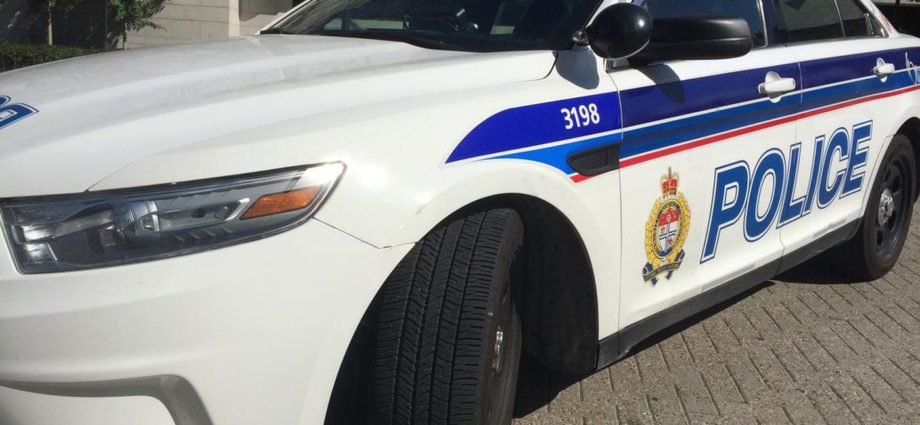
Erika Chamberlain, Western University
February 9, 2022
The leaders of the so-called freedom convoy in Ottawa have been served with a $9.8 million class-action lawsuit for the private nuisance caused by the noise and disturbance of the protest.
In addition, the crowdfunding site GoFundMe halted the release of funds from the campaign associated with the convoy, citing “the promotion of violence and harassment” in the nation’s capital.
But what about Ottawa police, who have been criticized for their failure to enforce municipal bylaws and criminal laws against the protesters? Should they also be liable for the losses suffered by locals, especially by businesses that have closed and lost substantial revenue?
Precedents in Canada
In Canada, police can be sued for their failure to protect victims of crime in some circumstances.
The leading case on police liability for failure to protect crime victims is Jane Doe v Metropolitan Toronto (Municipality) Commissioners of Police. The plaintiff, a victim of the so-called Balcony Rapist, successfully sued police after she learned that they knew a serial rapist was in the area and was likely to strike again.
Police had decided not to warn local women for fear that they would become “hysterical” and would jeopardize the investigation. The force was found liable for their failure to warn or protect the women from the rapist.
Two main factors were important to Jane Doe’s claim. First, the crime was foreseeable to police. Second, there was a narrow, identifiable group of potential victims (single women living in second- and third-floor apartments in a downtown neighbourhood). In other words, police had a duty to protect the women from a crime they believed was likely to happen.
Paul Callow, the man known as Toronto’s “balcony rapist” has been given a suspended sentence for twice breaching his parole conditions.
— Postmedia News (@PostmediaNews) August 12, 2010
In the decades since Jane Doe, police have been sued for their failure to protect victims of domestic violence and gang violence from known perpetrators. A private security firm was also sued for its failure to protect replacement workers who were killed during a violent strike in a mine in Yellowknife.
In each case, the crime was foreseeable and potential victims were identifiable.
What about Ottawa?
By this logic, it would be reasonable to conclude that police could be liable where crime is obvious and ongoing in a limited geographic area and they fail to take action against the perpetrators. But there are some facts that might distinguish the Ottawa situation from earlier cases.
One main difference regarding the situation in Ottawa is that one of the most substantial and longstanding harms is not physical injury, but economic loss to businesses that have closed. Police inaction seems more egregious when the lives and security of identifiable victims are endangered than when profits are lost.
While numerous people have reported harassment and disruption by the protesters, few rise to the level that would normally lead to a lawsuit.
Second, the relevant offences in Ottawa (for example mischief and noise violations) are public in nature, and aren’t targeted at specific victims. The losses suffered by businesses are the byproduct of the disruption in the downtown core.
Third, Ottawa police have had to balance the need for enforcement against the constitutional rights of freedom of expression and assembly — factors that are entirely absent in cases of gender-based or gang violence. They have also said that they have insufficient manpower to clear a convoy of massive motor vehicles and that enforcement efforts may escalate the conflict.
At the same time, a potential claim against Ottawa police would be stronger than some earlier cases because the criminal activity is occurring openly and consistently. Ottawa police could not argue, as some other police forces have, that it’s impossible for them to predict when a suspected criminal will strike, or that their intervention would not have made a difference.
Claims of uneven enforcement
Finally, police could be subject to allegations that their enforcement practices are uneven or even discriminatory.
To date, the convoy has been met with less force than, for example, social justice protests in support of Indigenous and Black rights.
While police have some discretion regarding law enforcement, exercising it arbitrarily could be seen as misuse of power. Under Canadian law, a public official’s decision on whether to exercise a power cannot be based on irrelevant or improper considerations, such as the object’s race, socio-economic status or political beliefs.
Of course, the reasons for a police officer’s decision to exercise power can be difficult to deduce, much less prove, and the allegations of uneven policing are national in scope. To the extent that these concerns are systemic, they may be better addressed through public processes rather than private lawsuits.
Subscribe to our newsletter.
Ultimately, lawsuits are a slow, rough and uncertain tool for addressing negligence by public authorities. Nevertheless, they can provide a useful means to draw attention to official inaction and thereby apply pressure for change. And for those who suffer substantial losses, lawsuits may provide the only hope for obtaining compensation.
Erika Chamberlain, Professor and Dean, Faculty of Law, Western University
This article is republished from The Conversation under a Creative Commons license. Read the original article.


